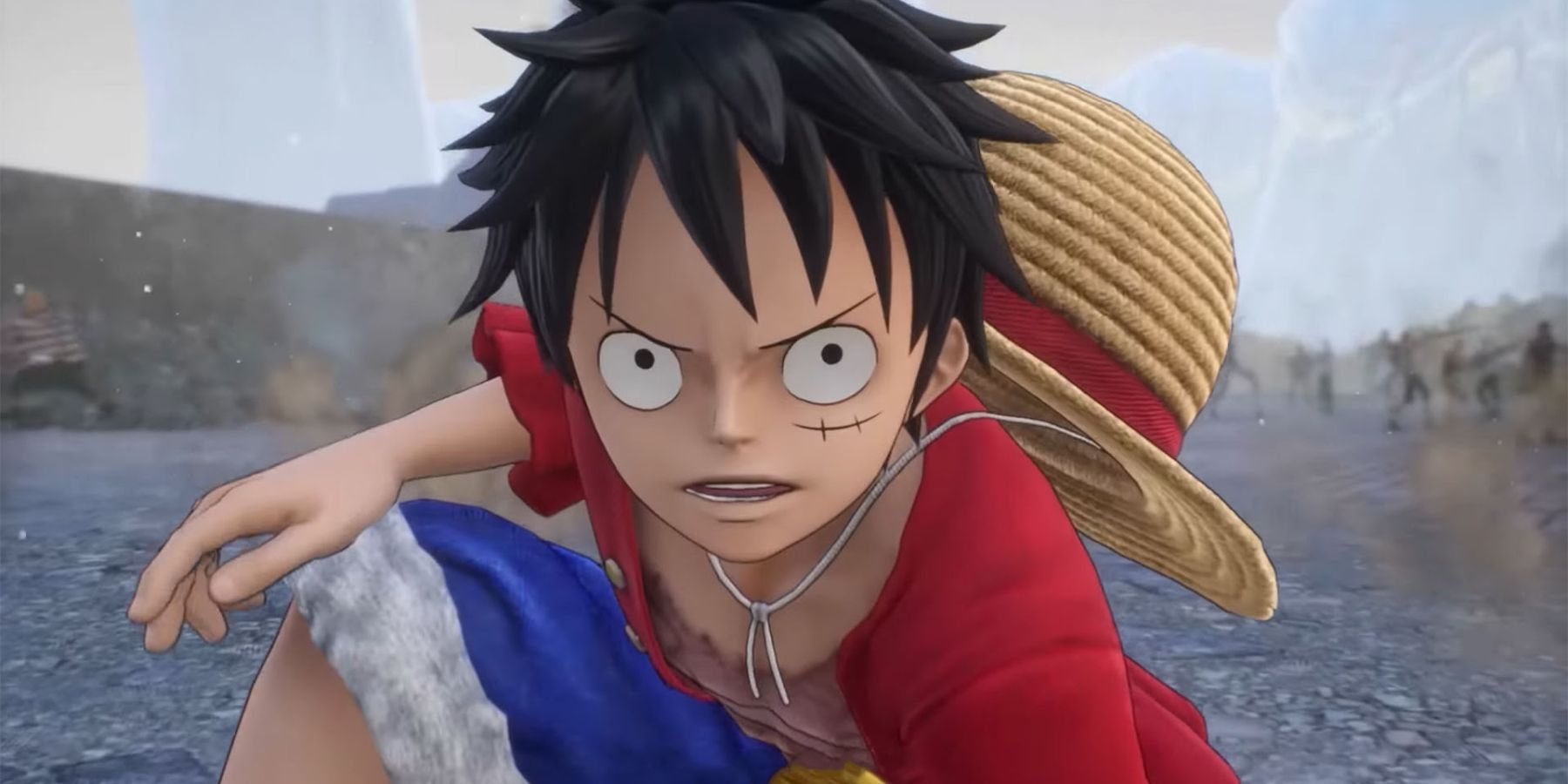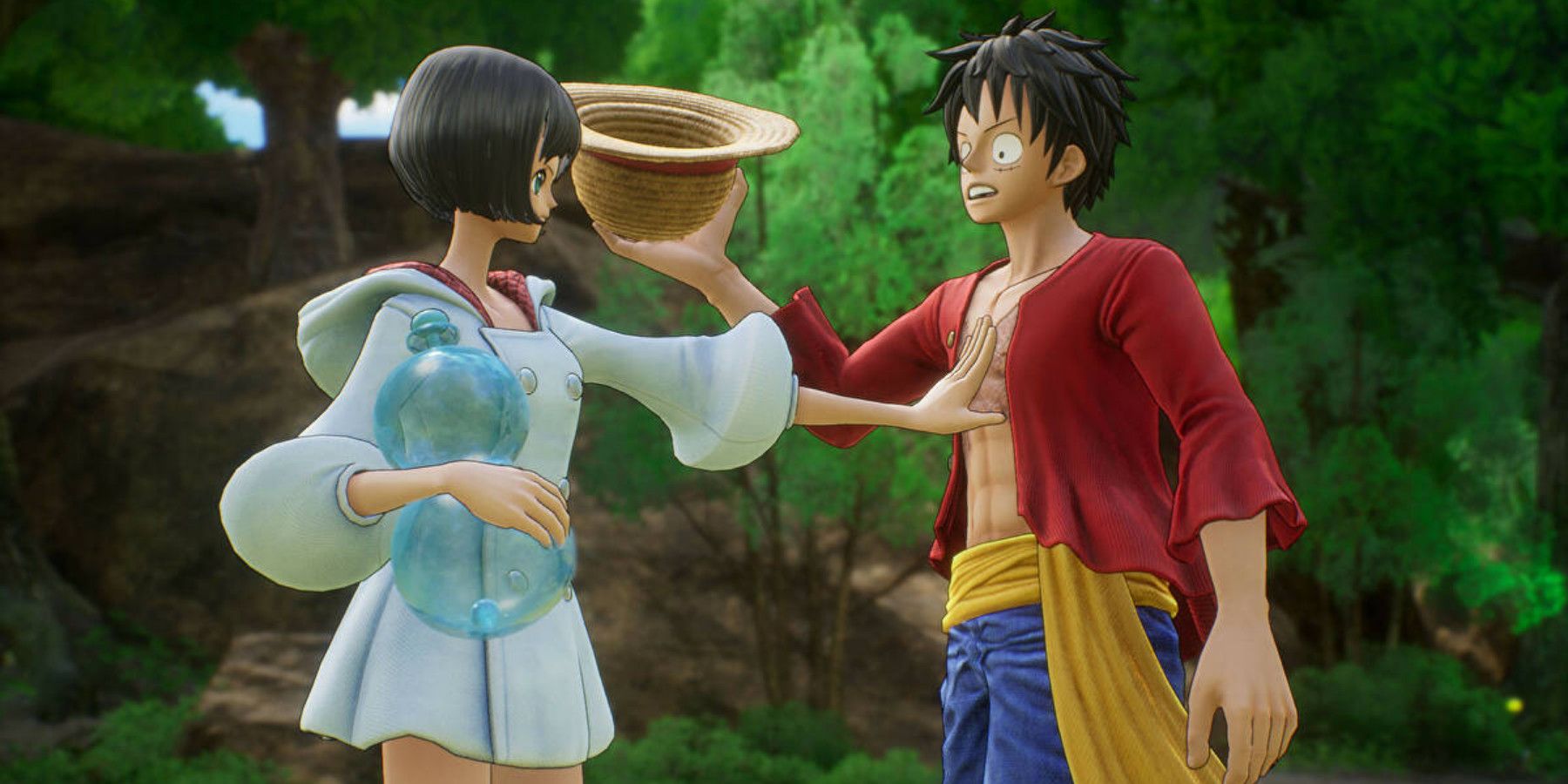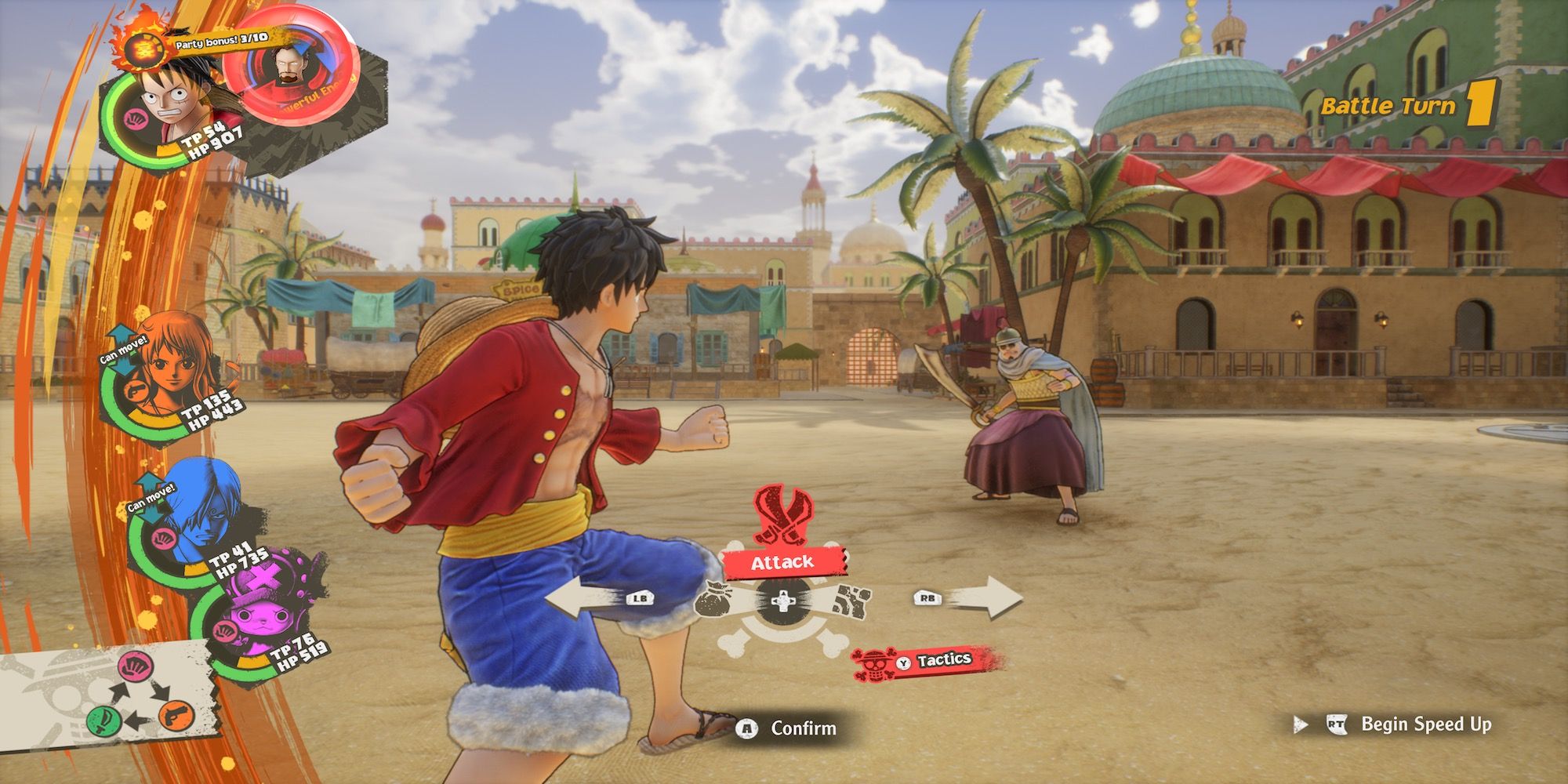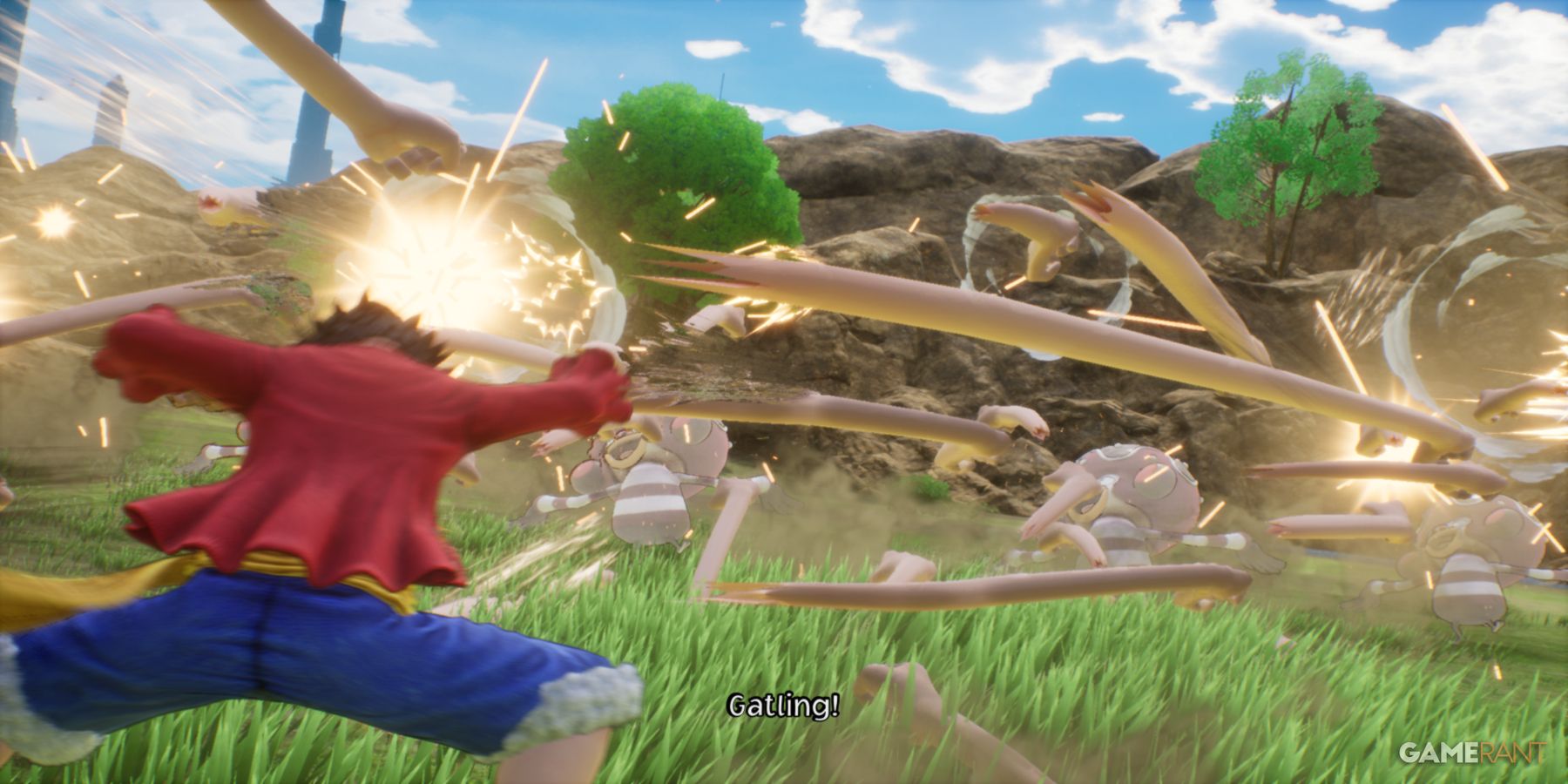One Piece Odyssey is the latest in a long line of Bandai Namco games to explore the One Piece characters and world created by Eiichiro Oda. Previous efforts to bring the manga and anime to life date back to the start of the millennium and span a variety of genres. One Piece Odyssey, a JRPG from developer ILCA, offers a grand new adventure for longtime fans and newcomers alike, but it takes a while to realize its potential.
As One Piece Odyssey begins, Luffy and friends are sailing on their loyal ship when they find themselves caught up in a spectacular storm. The vessel and its crew wash ashore on an island, where a mysterious woman drains everyone’s powers. To regain their strength, the heroes must defeat four guardians, a project that amounts to suicide unless they first delve into their memories of past adventures. While navigating distorted versions of prior events, they meet old allies and familiar enemies (luckily, they don't meet a lot of the more underwhelming One Piece characters), and work to strengthen their bonds. They hope their activity will eventually allow them to return to their regularly scheduled pirating adventures.
Its story has some inspired moments, but One Piece Odyssey’s most interesting developments don’t occur until well into the campaign. Players start by battling disposable foes and acquainting themselves with the abilities characters can use outside combat. Luffy, made of rubber and immune to electrical damage, extends his arms to latch onto distant grapple points. The hilariously meme-worthy Chopper, small and nimble, enters narrow passageways bulkier characters cannot. The various other party members have important secondary skills that allow them to fuse accessories, break down gates, locate precious loot, and so forth. Those abilities bring the worlds they explore to life and, along with various side quests and plot developments, provide incentive to revisit old ground much later in the campaign.
In combat, which isn't one of the more unique turn-based combat systems in a JRPG but still feels reasonably fresh, characters possess abilities to suit their nature. Those abilities consume TP, which the heroes replenish by using melee attacks on foes (or by scarfing down consumable items and equipping certain gear). TP meters carry over from one battle to the next, forcing players to rely on a variety of abilities and monitor resources as they explore new areas. Elemental strengths also play a role; different enemies may be weak to attacks that freeze, shock, or burn them, and the heroes have affinities of their own. It’s also possible to switch freely between active party members in battle, or even to swap them out for reserve units. The net effect of the various freedoms and restrictions is that players can’t conveniently skip through most battles by simply mashing a single button. Instead, they must take a more considered approach that varies based on enemy units and resources on hand.
Battles commence when players bump into patrolling enemies that are visible ahead of time. Surprise attacks are infrequent, and save point beacons tend to precede boss encounters. Players usually can avoid standard mobs entirely without even missing loot, since Luffy’s long arms can grab most goodies from a safe distance. Avoiding confrontations works well because grinding is rarely necessary. Combat often introduces special objectives (such as a particular enemy to defeat within a set number of turns) that generate a slew of bonus experience points to make up for occasional confrontations that players might skip. After some battles, characters may gain multiple levels at once, even when they weren’t facing bosses. It's not one of the best JRPGs to play if a person loves grinding, but that's probably good news for everyone else.
Savvy players will eventually realize the best way to produce a strong character is to purchase, fuse, and equip the finest available accessories. The fusion system allows ridiculous levels of customization, as any character can develop the ability to hit hard, defend well against special attacks or status ailments, or even passively restore health and TP. The finer points of that mechanic might initially prove overwhelming to genre newcomers, but veterans of more strategic franchises will soon recognize the potential. Then they can make a game of more efficiently demolishing enemies, which acts as an additional counter to some of the game’s most tedious elements. Battles end very swiftly once the heroes are appropriately outfitted.
Unfortunately, early moments the player spends mastering One Piece Odyssey’s flow are some of the most tedious ones on offer. It doesn’t help that they occur at the adventure’s onset, before the game has had time to build any goodwill. To make matters worse, the opening areas are linear to a fault. Even starting along the wrong branch at a minor fork in the road results in the player being unceremoniously deposited back on the one true path, which feels unnecessarily restrictive. At various points, uninspired backtracking is enforced and the ability to warp around the world map is sometimes disabled just when it might prove most helpful. In the late stages, the campaign’s linear side asserts itself at odd moments. Players sometimes must backtrack to familiar locations before they can cover new ground once more. Such speed bumps are at odds with otherwise brisk pacing and grate more than they otherwise might.
One Piece Odyssey features beautifully realized worlds, including port towns, dungeons, and ruins of the sort one might expect to encounter in a game about pirates and island paradises. However, one of the most sprawling environments is a broad desert with a series of bland interlinking caves. It is one of the least lively settings, which is a shame since players must linger there for so long near the start of their adventure. Fortunately, subsequent destinations feature more intriguing environments and tell more dynamic stories, ensuring the adventure mostly improves as it progresses. There also is an abundance of bonus objectives and subquests that offer substantial rewards and enjoyable distractions, while ensuring One Piece Odyssey takes a good long while to completely clear. The most noteworthy side content tells intriguing stories about noteworthy NPCs within the broader memories, who have major problems for the heroes to solve. The rewards for assisting them are new party combos that prove lethal in battle, along with additional opportunities to explore the overarching themes of friendship and sacrifice.
One Piece Odyssey is easy to enjoy even for a person unfamiliar with the anime because it is so accommodating to genre newcomers and veterans alike. It offers several welcome nods to accessible design - key mechanics are introduced appropriately, and any instructions remain easily accessible thereafter, plus points of interest are usually highlighted clearly on area maps. If battles begin to drag, players can speed up the lengthy combat animations that accompany the more powerful moves. Key dialogue in battle and throughout event scenes is voiced in Japanese, with subtitles that competently localize everything for people who don’t understand the language. Beautiful instrumental compositions play in the background and require no translation to convey the appropriate mood without growing tiresome, even after a person has spent dozens of hours within the game’s world.
One Piece Odyssey is a rousing adventure thanks to its engaging combat, liberating character customization, and beautiful environments. Sometimes, design choices limit player agency, but the effect rarely lasts long. The end result is a mostly satisfying JRPG that should keep fans hooked, provided they make it through the forgettable first few hours and take advantage of the various systems. After a few initial rough patches, the game lives up to most of its potential and is easy to recommend as both a One Piece experience and a JRPG.
One Piece Odyssey is out now for PS4, PS5, Xbox Series X, and PC. Game Rant was provided a PS5 code for this review.
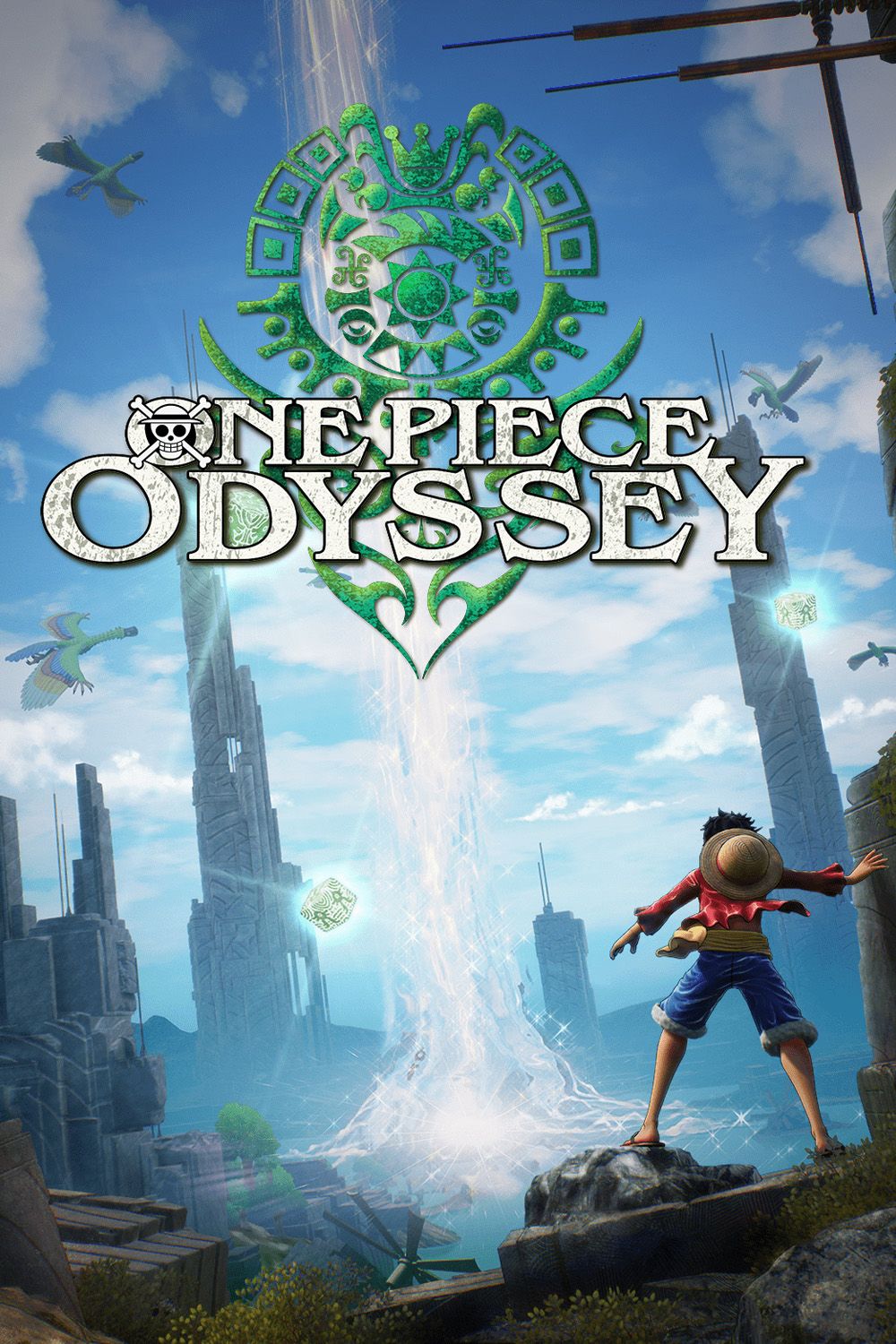
One Piece Odyssey
Based on Eiichiro Oda's popular shonen manga, ILCA's One Piece Odyssey is a turn-based RPG that tells an original storyline not found in the source material. When a storm hits the Thousand Sunny, the Straw Hats wind up separated and stranded on a strange island. Luffy must head out to find his crew while trying to unravel this island's secrets.

